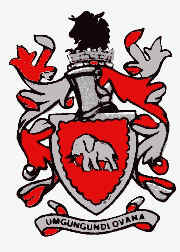
Greytown.co.za

 |
Greytown.co.za |
 |
|
Greytown is situated in Umvoti County 1 103m above sea
level. It is 155 km north west of Durban, 75 km north of Pietermaritzburg, 450 km
south east of Johannesburg and about 95 km west of Stanger.The GPS co-ordinates are s 29/04 and e 30/35. Click here for Google map It has a population of about 20 000 people comprising Black, Indian,
White and Coloured people. There are 5 primary schools, 3 high schools with a further 2 in Enhlalakahle Township. Wembley College is a private school from Grade 1 to Matric and was one of the first schools in South Africa to offer a Cambridge qualification. There are also several pre-primary schools in town. A modern Theodore Menne Library serves the community. An excellent cross cultural Museum is visited by numerous school children as well as the public. Greytown was established in 1854 and named after Sir George Grey, Governor of the Cape 1854 - 1861. It is a transitional town of Dutch and Colonial origin. It boasts a wealth of Victorian architecture. As one wanders through town one may come across Zulu women in colourful traditional clothing, complete with mud bee-hive hairstyles. These women may have come to town from Keate's Drift or Tugela Ferry in the Tugela basin. They intermingle with people in western style dress and Indian women who may be wearing colourful saris or punjabis. Greytown nestles in a hollow bounded in the North by Kelly Hill. The town is laid out in the grid system and being very similar to Pietermaritzburg it was called Umgungundlovana (the place of the baby elephant) by the early Zulus, as Pietermaritzburg was called Umgungundlovu (the big elephant and seat of the white government). The seat of Black government, where Dingaan lived, was also called the Big Elephant. Greytown is the hub of many interesting scenic drives, which vary from rolling sugar cane fields to timber plantations of pine, wattle, gum and poplar, while a little further north of the town aloes and euphorbia are clustered on the hillsides overlooking winding roads to the Muden Valley or to Dundee. En route Bushman paintings can be explored on the rocky hillsides. An Isivivane (cairn of stones), the original map and placed by early Zulu travellers for good luck, can be seen on the right as one drops into Weenen.
|